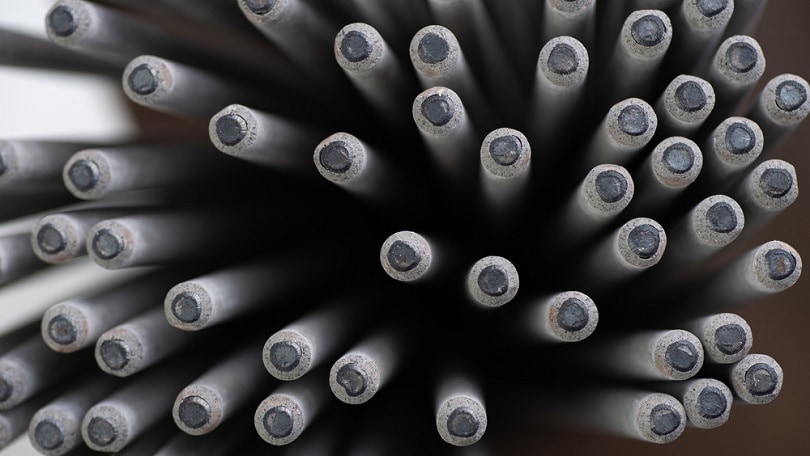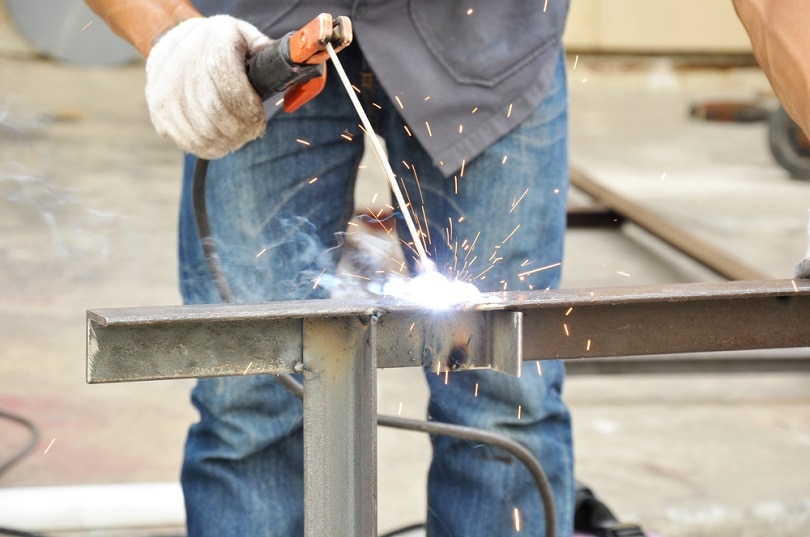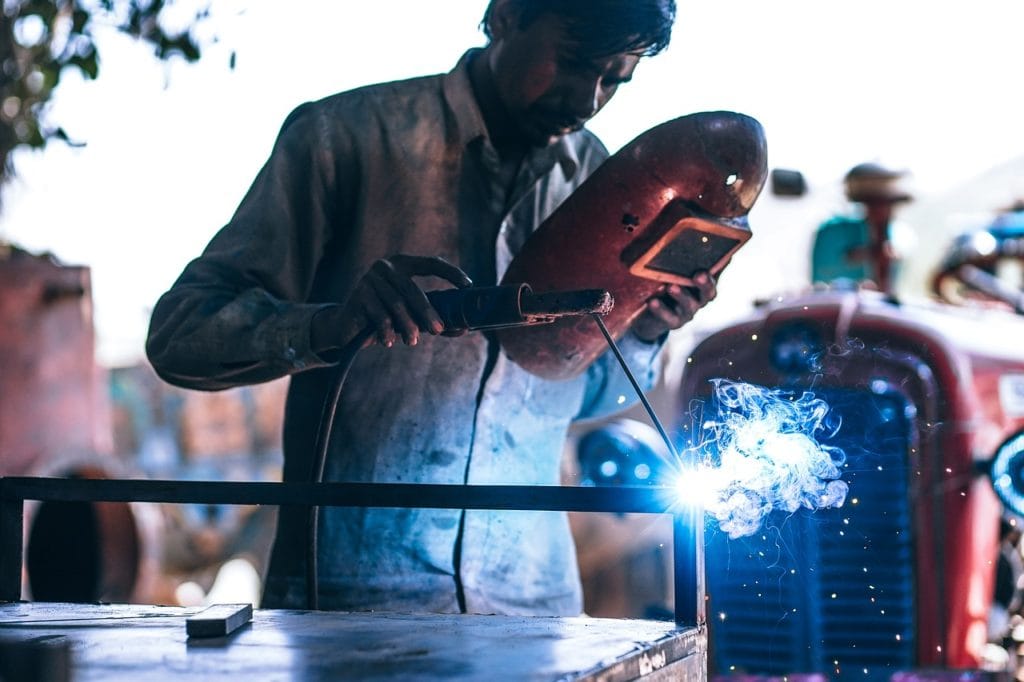How Hot is a Welding Arc – Surprising Facts & Safety Tips
Last Updated on

We all know welding includes hot hot heat, but how hot is the welding arc, really? On average, a welding arc is between 6500 and 10,000˙F. But a plasma arc can be up to 50,000˙F!
Welding is a curious trade. Whereas the work involved with trades such as masonry or carpentry can all be observed from one point of view, welding is different. There is a sort of barrier between the world of the seen and unseen or what the welder sees under his hood versus what those surrounding the welder see. No one else is able to see the details of the work until it is finished. But the welder alone is a sort of seer.
All smoke and mirrors aside, the welder with his welding helmet (or hood) is able to see through extremely bright ultra-violet light into the molten weld pool. But the light is still there and visible to those around him. With this light is a large amount of heat, felt mostly by the welder but potentially by those around him. The welder must take at least one safety precaution i.e., wearing a welding helmet in order to weld. But there are other things that he must do in order to protect things other than his eyes.
Components of a Welding Arc
There are three main components that make up a welding arc.
Electricity
The welding arc is generated by an electrical current from a power supply. The current flows through the workpiece causing a short circuit that melts the base metal and filler metal simultaneously. Since you are dealing with electricity, it is important to be cautious. For example, if you are welding in the rain, you need to keep in mind that water conducts electricity, and you can get zapped if exposed to too much water.
Light
Contrary to what many people may say, a welding arc is not brighter than the sun. However, exposure to welding arc light is brighter than any sun you will experience beneath the atmosphere. The arc gives off ultraviolet light that can burn your eyes and skin by being exposed to it.
Heat
As stated earlier, on average, a welding arc is about 10,000˙F. But a plasma arc can be up to 50,000˙F. The surface of the sun is said to be about 10,000˙F. What makes welding tolerable is that the heat is mostly concentrated within the weld zone at the point of the arc. But the heat does radiate so you do have to take caution.

Protecting Yourself from the Welding Arc
Since we are talking about protecting yourself from a light brighter than any other you will see and from a heat comparable to the sun, it goes without saying that you have your wits about you.
Electricity
The risk is greater when you are exposed to the elements outside. But you should always make sure that your clothing is as dry as possible. The conditions are not always ideal but at every step you should try to mitigate moisture from entering the weld zone and keep yourself dry.
Light
Ultraviolet rays can burn your skin much like a sun burn. But with welding, the same kind of burns that you get on a blistering sunny day in the middle of a Phoenix July can happen within an hour of welding unprotected. If you don’t do anything about it, it can lead to long term health problems including cancer. Wear clothing that it is appropriately sized, not too tight and not too loose. Light can enter through gaps in clothing and burn your skin, even in a short period of time.
Most importantly, ensure that your welding hood is operating correctly. This means that your lens does not have cracks in it, there are no gaps around the edges, etc. A miniscule crack in a welding lens can cause flash burn. This often happens when being exposed to UV light even only for a couple of minutes. The UV light burns your cornea causing small, but irreparable damage to your eyes. You will not feel it initially. It usually sets in later. If you wake up in the middle of the night with a headache and feel as if you have sand in your eye, you probably have flash burn. The pain usually goes away after a day or so.

Heat
Α welding arc can be as hot as the surface of the sun. When welding you can feel the heat radiating from the center of the arc. It can become distracting and burn you. A good weld can be ruined because of your own discomfort due to the heat.
While tighter woven clothing is essential to keeping the harmful UV rays off of your skin, it will not necessarily protect you from the heat. Proper positioning during welding can keep the heat away from you to some degree. Better protection can come from a leather welding jacket or apron. Not only will this keep much of the radiation off of you, but it will also help protect you from hot sparks, hot pieces of slag, and grinding dust.
How Hot is MIG Welding?
Approximately 3,000°F, as the base metal melts and fuses with the melted filler metal.
How Hot is TIG Welding?
Temperatures may exceed 6,000°F during the arc welding process.
Conclusion
Ideally, you will not notice any of the three components to a welding arc when you are welding. All of the safety equipment is designed so that you can weld as focused as possible, in your own little world under the hood.
